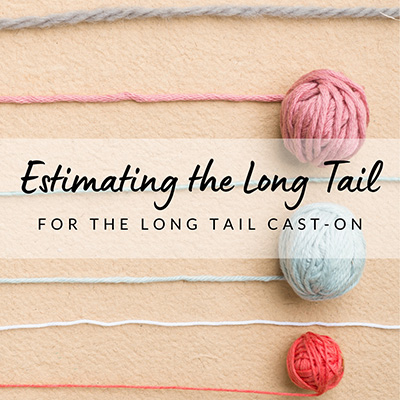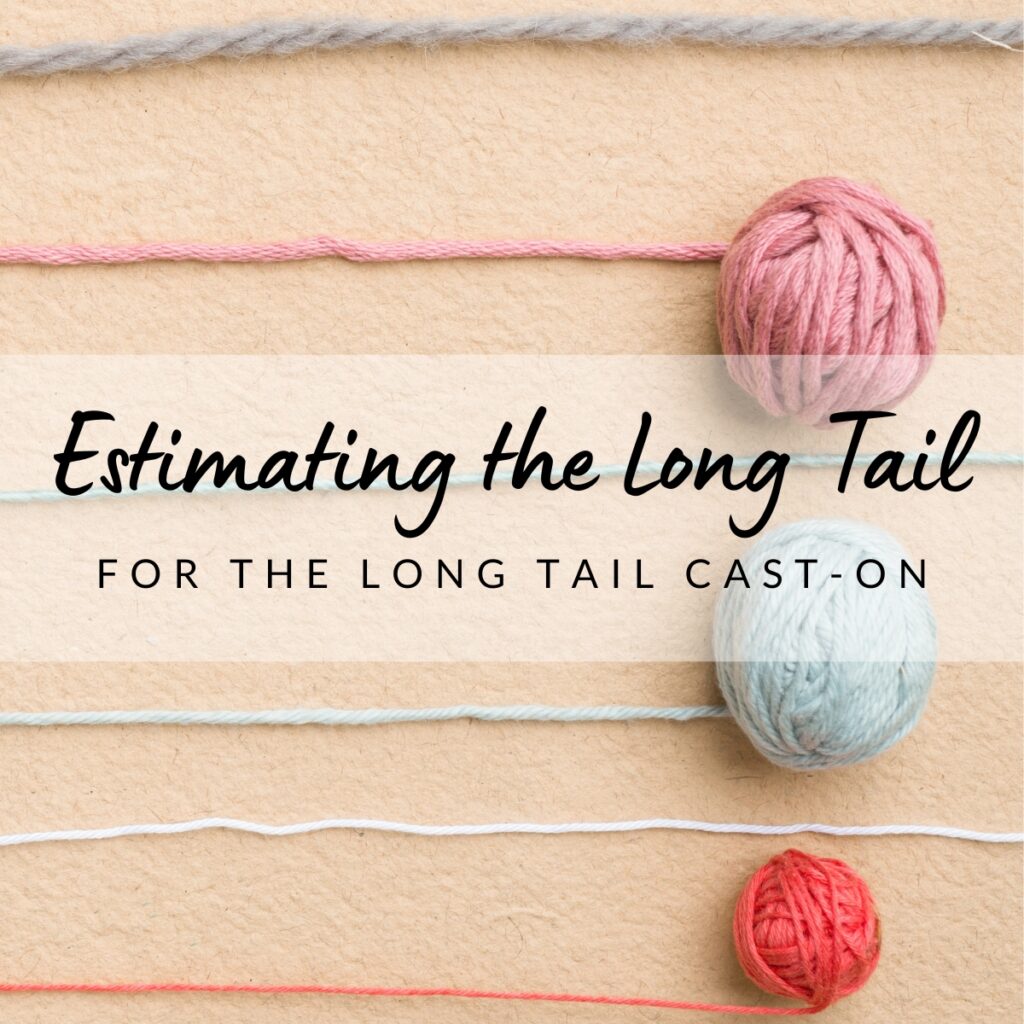I prefer using knitting techniques that are fairly straight-forward and fuss-free (but still provide nice results!). This is why I like using the long tail cast-on method in my designs – it creates a lovely edge but isn’t complicated.
However, one aspect of this cast-on that can be frustrating is estimating the yarn length. Because, in order to do this cast-on, you first need to estimate a tail length that will allow you to cast-on all of your stitches (since you use both the tail and the working yarn as you’re casting-on).
What causes the frustration with this exercise is when you you estimate too little (and then have to start the cast-on all over again) or too much (and then you waste yarn).
So what’s the trick for estimating just the right amount? Well, there is no one simple way, but there are lots of different tricks out there you can try.
Trick #1: The Yarn Wrap Method
One popular trick is to take your yarn and wrap it around your needle for as many number of times as you have stitches to cast-on.
For example, if you have to cast-on 30 stitches, you would wrap the yarn around the needle 30 times and that should give you the approximate length you’ll need.
A slightly alternative version of this is to break it down in 10 stitch increments. I just created a new quick video tutorial that explains this visually (it’s only 90 seconds long) – click below to check it out!
Trick #2: The “Eyeball” Method
A slightly less measured version of the above is what I have always just called the “eyeball” method. It similarly breaks it down into 10 stitch increments, but instead of wrapping the yarn around your needle, you just estimate visually (hence “eyeball method”) how much yarn you think you’ll need to cast-on 10 stitches, pinch the yarn at that point, and then keep it doing that over and over until you reach your total cast-on amount.
This is the method I use in my beginner’s tutorial on how to work the Long Tail Cast-On. Check it out below!
Trick #3: Forget estimating – use a 2nd skein!
Another popular trick you can implement is actually not estimating at all! Instead, use a 2nd skein. This extra skein acts as your long tail and so no estimating is needed. The only downside is that you’ll have more ends to weave in at the end. But if you don’t mind that, then it’s a great little trick to try.
If your yarn is wound into a cake, you can also consider using the inside tail instead of a 2nd skein.
I have a quick little video tutorial that shows you exactly how to work this trick – you can check it out below!
Do you have any additional tips for estimating the tail length in the Long Tail Cast-On method? If so, reach out – I’d love to hear about it!


